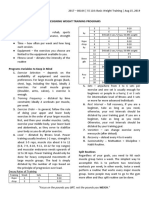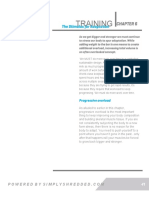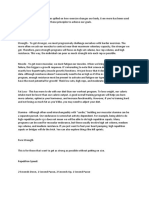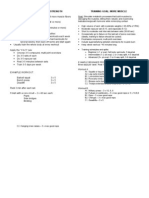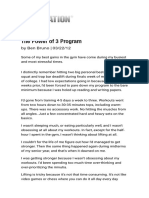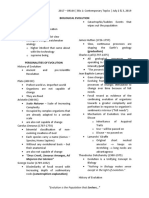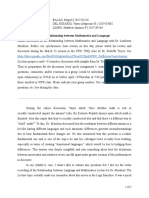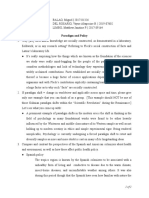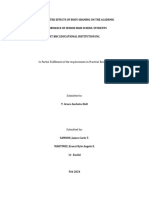0% found this document useful (0 votes)
142 views5 pagesSS 110 - Lecture Notes Part 3
Whole body workouts are effective for general fitness but have limitations for more advanced lifters' goals. Split routines divide the body into groups like "push", "pull" and "legs" to allow for more exercises and sets per muscle. While gaining muscle and losing fat at the same time is difficult, the best strategy is to first gain muscle through calorie surplus, then maintain weight, and slowly lose fat through calorie deficit while retaining muscle.
Uploaded by
Matthew LimboCopyright
© © All Rights Reserved
We take content rights seriously. If you suspect this is your content, claim it here.
Available Formats
Download as PDF, TXT or read online on Scribd
0% found this document useful (0 votes)
142 views5 pagesSS 110 - Lecture Notes Part 3
Whole body workouts are effective for general fitness but have limitations for more advanced lifters' goals. Split routines divide the body into groups like "push", "pull" and "legs" to allow for more exercises and sets per muscle. While gaining muscle and losing fat at the same time is difficult, the best strategy is to first gain muscle through calorie surplus, then maintain weight, and slowly lose fat through calorie deficit while retaining muscle.
Uploaded by
Matthew LimboCopyright
© © All Rights Reserved
We take content rights seriously. If you suspect this is your content, claim it here.
Available Formats
Download as PDF, TXT or read online on Scribd
/ 5








